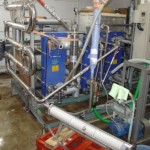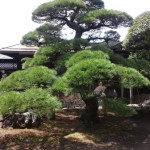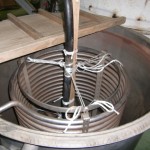…Isn’t simple in the sake-brewing world!
Sake brewing can be, to put it mildly, complicated. Just getting from rice to
ambrosia calls for milling-washing-soaking-steaming-molding-fermenting-pressing and a dozen other -ings along the way, each with deep complexities involved. And that is before we begin to consider the variations that each and every brewer applies.
But after that’s all done, once the completed sake drips out, we are done with the hard-to-understand stuff, right? I mean, we just have to store it, pasteurize it, cut it with water, and bottle it at some point, right? That’s pretty straightforward, right?
Wrong. The last few steps, as seemingly simple as they sound, exert massive leverage on the nature of the final product. How and when a sake is pasteurized, how long and at what temperature it is stored, and even whether it was stored in a tank or bottles – all these sound simple, but can make or break a quality sake, regardless of how good it might have been at pressing time.
We sat on his garden’s porch, the brewer and I, looking at a 350-year old pine tree. As I pondered the fact that that pine tree has been around exactly seven times as long as I have, we chatted about recent issues in brewing. The brewer in question is of stable (read: large-ish) size and of outstanding reputation, well deserved too. And he commented, “In fact, the biggest issue I face now in keeping one step ahead of the competition in terms of flavor quality is pasteurization. We keep tweaking things, and even after all this time it is still a bit of trial-and-error.”
At first this surprised me. I mean, you’d think they would have that down by now. Three hundred and fifty years should be enough to figure out something like pasteurizing your sake, right?
Wrong. It ain’t that simple, it never was, and it always needs tweaking. Let us consider some of the various ways it can be done.
First, remember why sake is pasteurized. Momentarily heating it up will deactivate enzymes that would feed a form of lactic bacteria, and kills any of that bacteria that might be there as well. If sake is not pasteurized, it must be kept cold to not allow the enzymes to do much, or the chances of it going funky are significantly higher. But you knew that, right?
And nama-zake, or unpasteurized sake, is not unequivocally better than its pasteurized counterpart anyway. But that is a rant for another day.
Still, there can only be a couple of ways to go about this kind of a thing, right?
Wrong. There are so many variations to pasteurizing that it is daunting to even think about cataloging them. How many times it is done (once or twice?), to how high a temperature (about 65C for most), how quickly or slowly it is heated (could be very gently and slowly, could be instantaneous using a heat-exchanger), how fast or slowly it is cooled down, is it done en masse by the tank or to individual bottles, and if so, by showering those bottles with hot water or letting them sit in a trough of the stuff? And the timing! Sake matures more quickly when nama (unpasteurized) so the final maturity is hugely swayed by the timing of pasteurization.
One standard way is to run the sake through a coil that is submerged in hot water, as in the photo above. A more modern and much more expensive way is the flash-pasteurizer in the photo below.
 All of these will vary from sake to sake, grade to grade, product to product. And of course, they will vary from brewer to brewer as well. What works for one brewer or sake product will not necessarily work for all, if any, others!
All of these will vary from sake to sake, grade to grade, product to product. And of course, they will vary from brewer to brewer as well. What works for one brewer or sake product will not necessarily work for all, if any, others!
And they will change over time, either based on new research or experimentation or on new market needs, i.e. consumers preferring the results of one method over the other. As one example, much sake these days is pasteurized only one time, and stored in bottles not tanks. This pain-in-the-arse method gives sake with a more discernible, fine-grained flavor to it. So if a kura’s sake suits this style (not all does!), this is a trend commonly followed.
The point here is that there are countless variations on how to do something as simple-sounding as pasteurization, and each brewer has his or her own methods and preferences. The standard one-line explanations of olde rarely apply anymore. But ask anyway, should you get the chance. And when you do, bear in mind that even the simplest-sounding steps in sake brewing are anything but simple.
Final note: I, personally, prefer pasteurized sake most of the time, as I can perceive more depth in it. But nama-zake (unpasteurized) can be zingy, fresh, young and lively. And certainly it can be more attention-getting, if often less subtle. By all means, explore both realms and decide your preferences.






